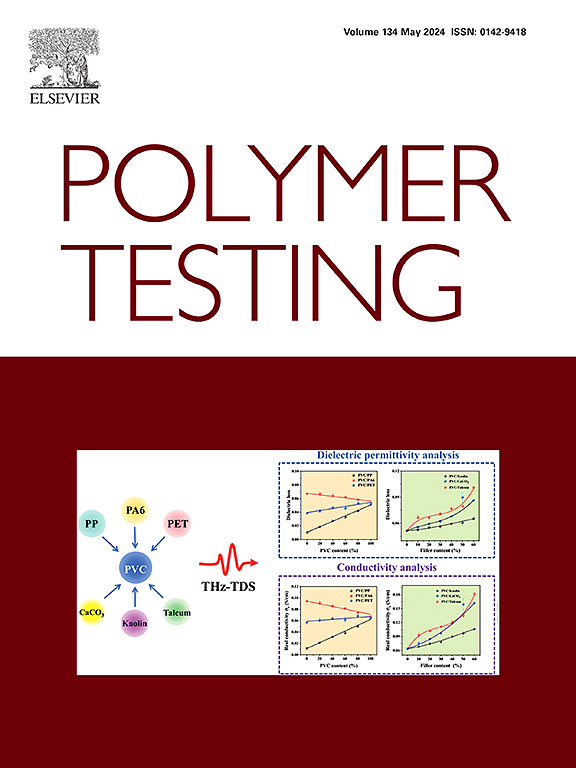β-crystals aied greater energy absorbing ethylene–propylene rubber in polypropylene blends for outstanding low-temperature toughness
IF 5
2区 材料科学
Q1 MATERIALS SCIENCE, CHARACTERIZATION & TESTING
引用次数: 0
Abstract
Modulating the β-crystalline phase and adding elastomers have traditionally been used to overcome the brittleness of polypropylene (PP); however, the synergistic mechanisms of these components in enhancing low temperatures toughness remain insufficiently explored. A β-nucleating agent (TMB-5) was incorporated into the polypropylene/ethylene–propylene rubber (PP/EPR) system to address the challenges of enhancing low-temperature toughness. Under an extreme low-temperature condition of −40 °C, the PP/EPR/TMB-5 blends exhibit a remarkable enhancement in low-temperature toughness compared with PP/EPR blends, showing a 138 % increase to reach 38.3 kJ/m2. In addition, these blends demonstrate an 8.47 % increase in tensile strength at room temperature. The addition of TMB-5 provides numerous nucleation sites that facilitate the β-crystallization of polypropylene, leading to an increased content of β-crystals and a reduction in crystal grain size. Broadband dielectric relaxation spectroscopy shows that the constrained relaxation of EPR near the crystals shifts to higher temperatures with the formation of β-crystals. The lamellar structure of the β-crystals prevents the aggregation of EPR rubber domains during cooling process, resulting in reduced rubber particle spacing. Observations of remarkable shear deformation and extensive stress-whitening areas on the fracture surfaces of PP/EPR/TMB-5 blends upon impact at −40 °C, as opposed to PP/EPR blends, underpin that the lamellar structure of β-crystals within the composite material efficiently transmits stress further away, facilitating the involvement of more EPR particles in energy dissipation. This finding enables an in-depth investigation into the synergistic toughening mechanism and provides new insights into blends design with conventional rubber for extreme conditions.
求助全文
约1分钟内获得全文
求助全文
来源期刊

Polymer Testing
工程技术-材料科学:表征与测试
CiteScore
10.70
自引率
5.90%
发文量
328
审稿时长
44 days
期刊介绍:
Polymer Testing focuses on the testing, analysis and characterization of polymer materials, including both synthetic and natural or biobased polymers. Novel testing methods and the testing of novel polymeric materials in bulk, solution and dispersion is covered. In addition, we welcome the submission of the testing of polymeric materials for a wide range of applications and industrial products as well as nanoscale characterization.
The scope includes but is not limited to the following main topics:
Novel testing methods and Chemical analysis
• mechanical, thermal, electrical, chemical, imaging, spectroscopy, scattering and rheology
Physical properties and behaviour of novel polymer systems
• nanoscale properties, morphology, transport properties
Degradation and recycling of polymeric materials when combined with novel testing or characterization methods
• degradation, biodegradation, ageing and fire retardancy
Modelling and Simulation work will be only considered when it is linked to new or previously published experimental results.
 求助内容:
求助内容: 应助结果提醒方式:
应助结果提醒方式:


